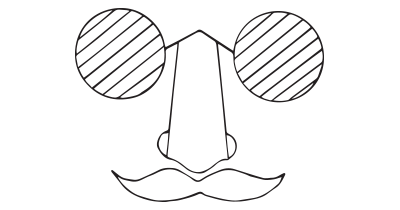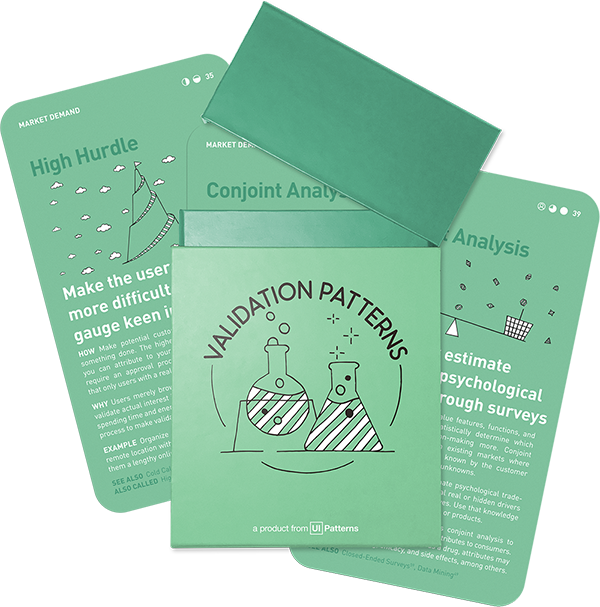Idea Validation: Product
Impersonator
Serve a competing product to your customers as if it was your own

How: If competing products already exist, repackage them as your own as a simple way to gather quick feedback or ask customers to sign up and give feedback on a competitor's website as if it was your own.
Why: Why commit to expensive partnerships or spend time building a prototype when plenty already exist to test. Investigate whether repackaging a competing service in a new form will yield significant results.
Use what is already there
The Impersonator experiment suggests that if a similar idea to yours already exists, you should try to repackage that as your own as a simple way to gather quick feedback. This is especially effective when testing physical products or showing early-stage static mockups.
Skinning and posing an existing product as a new offer comes with the advantage that the existing product has known performance characteristics. Customers can have faith to put the product in the hands of test participants.
When testing desirability, the ability to test an actual selection and to purchase it in a retail environment is all that is required by the impersonator. Feasibility tests examining the properties and differentiation of the product comes later.
How it’s done
In this experiment, a company takes an existing product from the market, typically one that closely resembles their envisioned product, and rebrands or repackages it under their own name. This could involve minor modifications to tailor it slightly to their target audience. The objective here is not to deceive customers but to learn from their reactions to the product, including their likes, dislikes, and overall usage patterns.
By using an existing product, companies can bypass the lengthy and resource-intensive process of developing a prototype from scratch. This allows them to rapidly gather insights about customer preferences and market demand. The feedback obtained through this method is invaluable in refining the product concept and making informed decisions about whether to proceed with development.
An important aspect of the Impersonator experiment is its focus on customer experience and interaction with the product. It provides a real-world testing environment, allowing companies to observe how customers use the product, what features they find appealing, and any potential issues or shortcomings. This direct customer feedback is crucial in shaping the final product to ensure it meets the market’s needs and expectations.
Real life Impersonator examples
Zappos
To test their business idea fast and cheap, Zappos initially purchased shoes from local shoe retailers as orders came in instead of investing in and stocking their own inventory.
Source: Is Your MVP Minimal Enough?
Tesla & Lotus Elise
When Tesla wanted to create a pure electric roadster in 2003, Tesla created a prototype of what the car would look like to convince potential buyers. The base for the prototype was a Lotus Elise, heavily modified and not functional. Still, with a relatively small investment, Tesla was able to show prospective buyers a close proxy to the final design.
Source: Lotus Position (Tesla)
A collection of 60 product experiments that will validate your idea in a matter of days, not months. They are regularly used by product builders at companies like Google, Facebook, Dropbox, and Amazon.
Get your deck!Related plays
- Enterprise lean startup experiment examples by Moves the Needle
- Is Your MVP Minimal Enough? by Bobby Kilpatrick
- Pretotyping @ Work by Jeremy Clark
